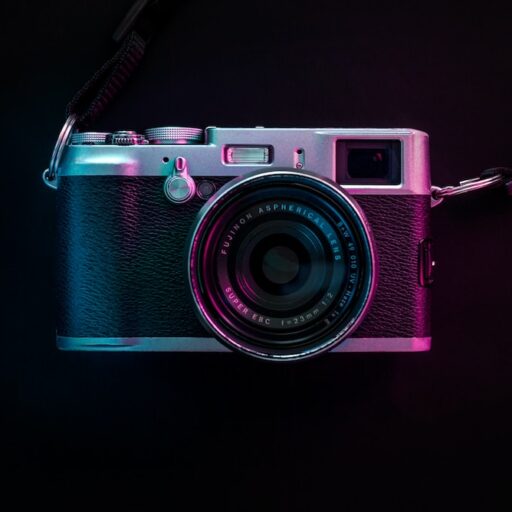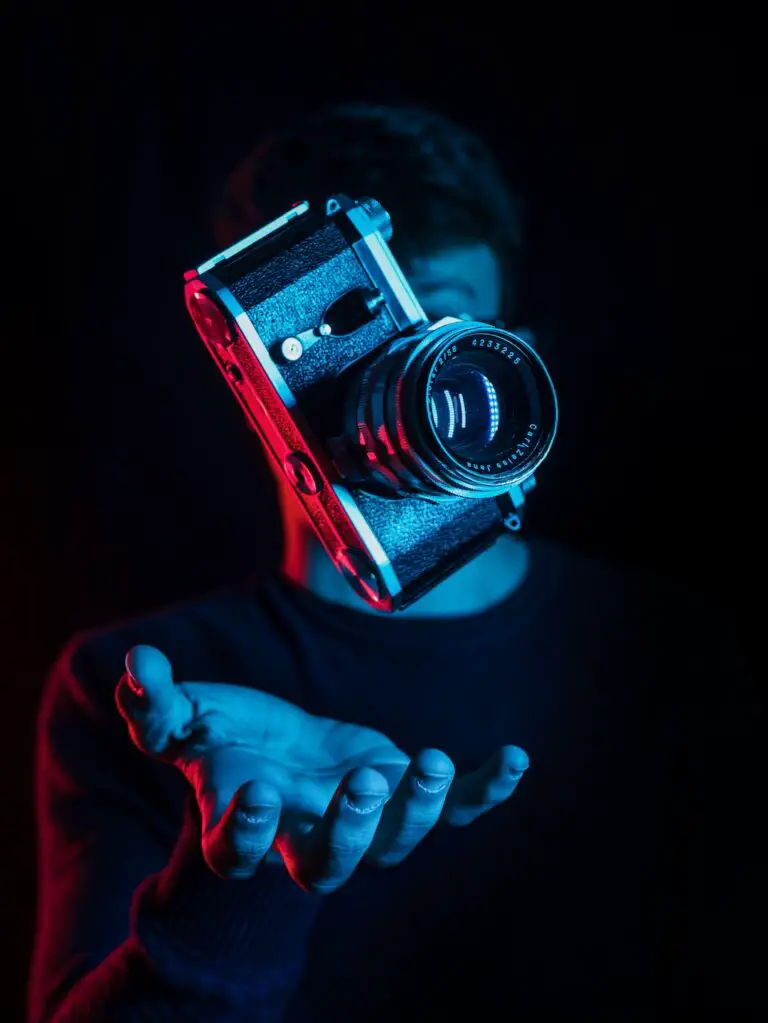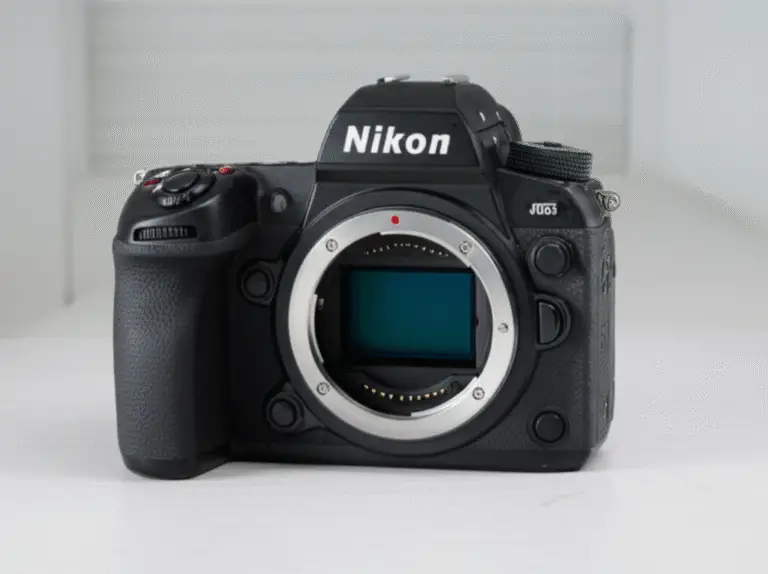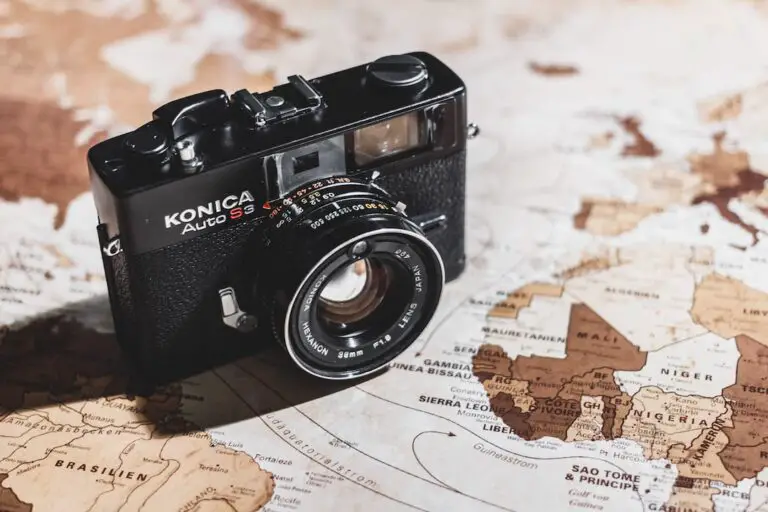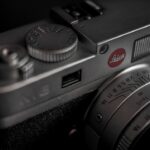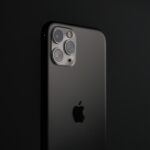Support our educational content for free when you purchase through links on our site. Learn more
Is Sony A7 III Good for Beginners? 📸 (2025 Expert Review)
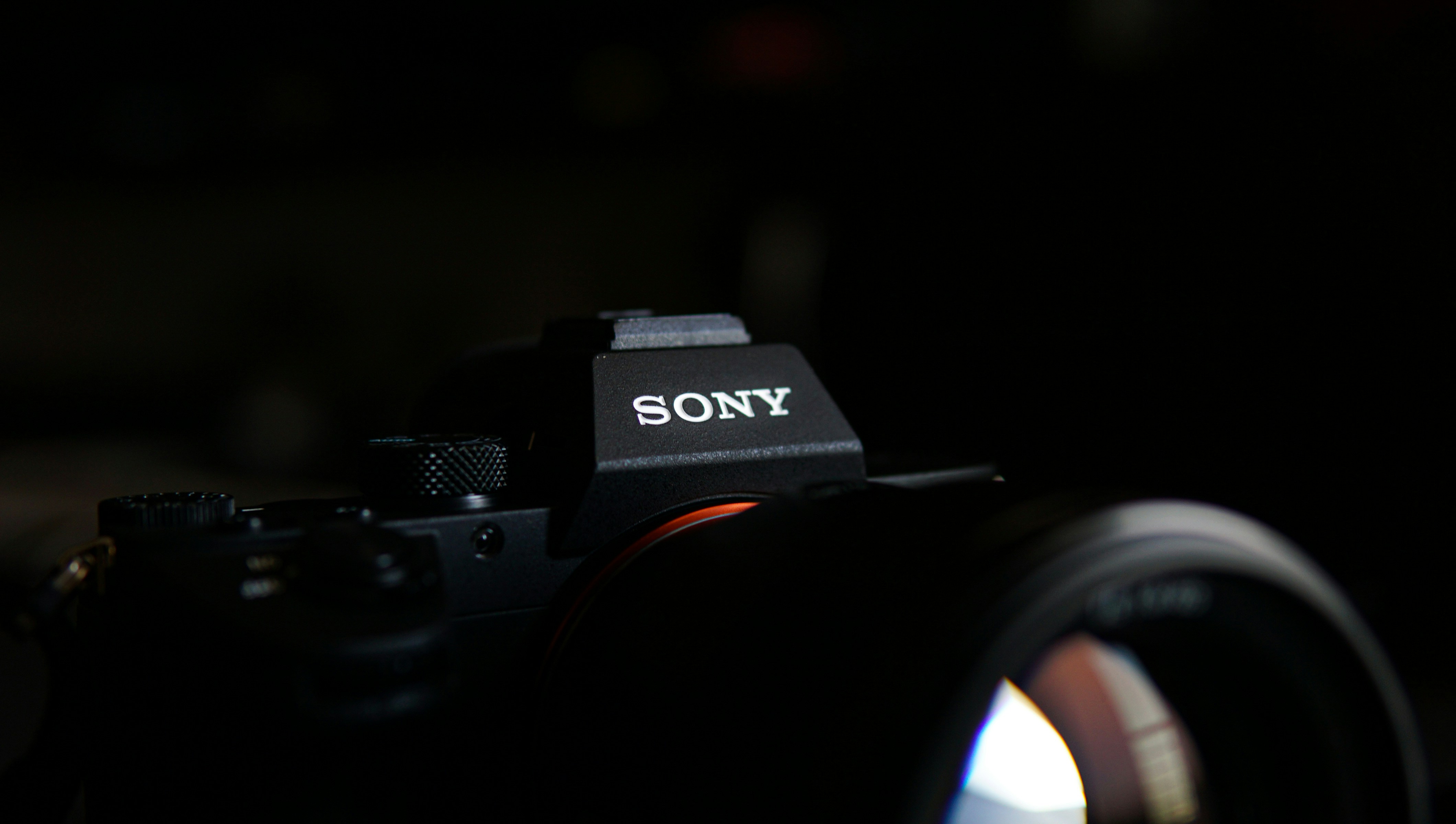
Thinking about diving into photography with the Sony A7 III but wondering if it’s too advanced for a beginner? You’re not alone! This camera has earned a legendary reputation among pros, but can it really be the perfect first camera for someone just starting out? Spoiler alert: Yes, it can — and here’s why.
At Camera Brands™, we’ve tested the A7 III extensively and helped countless beginners unlock its potential. From its game-changing Eye AF that locks focus on your subject’s eyes, to its stunning full-frame image quality and surprisingly long battery life, this camera is like having a professional assistant in your bag. But don’t worry — we’ll also cover the learning curve and how to tame Sony’s famously complex menu system. Plus, we’ll compare it to other beginner-friendly cameras and reveal the best lenses and accessories to get you started.
Ready to find out if the Sony A7 III is your perfect photographic partner? Keep reading for our full expert breakdown and insider tips!
Key Takeaways
- Sony A7 III offers professional-grade autofocus and image quality that beginners can grow into.
- Eye AF and wide autofocus coverage make capturing sharp portraits and pets effortless.
- Long battery life and weather-sealed body enhance shooting confidence in varied conditions.
- The menu system is complex but highly customizable — perfect for learning and mastery.
- Buying used A7 III bodies and third-party lenses like Tamron or Sigma can save you money.
- Versatile for photography genres: portraits, landscapes, street, events, and even video.
👉 Shop Sony A7 III and Accessories:
- Sony A7 III Camera Body: Amazon | KEH Used
- Sony FE 50mm f/1.8 Lens: Amazon
- Tamron 28-75mm f/2.8 Lens: Amazon
- Sony NP-FZ100 Batteries: Amazon
Table of Contents
- ⚡️ Quick Tips and Facts
- 📸 The Sony Alpha A7 III: A Legacy of Innovation for Aspiring Photographers
- Is the Sony A7 III a Beginner-Friendly Camera? 🤔 Our Expert Verdict
- 🌟 Key Features of the Sony A7 III That Empower Beginners
- 1. Autofocus System: Snapping Sharp Shots with Ease
- 2. Image Quality: Full-Frame Magic in Your Hands
- 3. Video Capabilities: Beyond Stills for Creative Storytelling
- 4. Ergonomics and Build: Comfort and Durability for Learning
- 5. Battery Life: Powering Your Photographic Adventures
- 6. Lens Ecosystem: A World of Possibilities Awaits
- 💰 Is the Sony A7 III a Smart Investment for Your First Camera?
- 📈 Navigating the Learning Curve: Tips for Mastering Your A7 III
- 🆚 Sony A7 III vs. Other Beginner-Friendly Contenders
- 📸 What Can You Shoot? The A7 III’s Versatility for Different Photography Genres
- 🧼 Keeping Your A7 III Pristine: Essential Maintenance Tips
- 🤝 Joining the Tribe: Online Communities and Learning Resources for A7 III Users
- ✨ Conclusion: Our Final Thoughts on the A7 III for New Photographers
- 🔗 Recommended Links for Your Photography Journey
- ❓ FAQ: Your Burning Questions Answered
- 📚 Reference Links and Further Reading
Here is the main body of the article, crafted by the expert team at Camera Brands™.
⚡️ Quick Tips and Facts
Pressed for time? Here’s the lowdown on the Sony A7 III for beginners. We’ll unpack all this and more, but if you need the highlights, this is your section!
- Full-Frame Power: The A7 III features a full-frame sensor, which is the same size as 35mm film. This generally means better image quality, especially in low light, and that beautiful blurry background (bokeh) everyone loves. 🤩
- Autofocus King: Its autofocus (AF) system is legendary. With 693 phase-detection points covering 93% of the sensor, it’s incredibly fast and accurate. The Eye AF for humans and animals is a game-changer for sharp portraits.
- Not a “Beginner” Camera, but Great for Beginners: This isn’t a simple point-and-shoot. It’s a professional-grade tool. However, its excellent automatic modes and intuitive features make it a camera you can grow into, not out of.
- Video Powerhouse: It shoots stunning 4K video, making it a fantastic hybrid option if you’re interested in both photography and videography.
- The “Basic” Model That Wasn’t: When Sony launched the A7 III, they called it their “basic” full-frame model. The photography world laughed. Its features were anything but basic, setting a new standard for what an entry-level full-frame camera could be.
- Battery for Days: It uses the Sony NP-FZ100 battery, a massive improvement over previous models. You can realistically shoot all day without needing a recharge. We’re talking up to 710 shots per charge, which is fantastic for a mirrorless camera.
- Investment Piece: While it’s an older model, its price on the used market makes it an incredible value proposition. You’re getting pro-level features for a fraction of the original cost.
📸 The Sony Alpha A7 III: A Legacy of Innovation for Aspiring Photographers
Let’s hop in the time machine for a second. The year is 2018. The camera world is still heavily dominated by the two titans, Canon and Nikon, and their trusty DSLRs. While many photographers are still debating Which Camera Is Better, Canon or Nikon? 📸 (2025 Ultimate Guide), Sony was busy cooking up a revolution in their mirrorless kitchen.
When the Sony A7 III (officially the ILCE-7M3) dropped, it wasn’t just another camera release; it was a seismic event. Sony marketed it as their “basic” full-frame model, but the specs sheet read like a professional’s wish list. It packed features from their high-end Alpha models, like the A9 and A7R III, into a body that was far more accessible.
It was, for lack of a better term, a giant-slayer. It offered a 24MP full-frame sensor, an out-of-this-world autofocus system, 10 frames-per-second shooting, 4K video, and dual card slots. It completely redefined the market and forced competitors to play catch-up. For many of us here at Camera Brands™, it was the camera that finally convinced us to make the full switch from DSLR to mirrorless. It was that good. And that legacy is precisely why we’re still talking about it today as a phenomenal choice for someone just starting their photographic journey.
Is the Sony A7 III a Beginner-Friendly Camera? 🤔 Our Expert Verdict
So, the big question: should you, a beginner, buy a Sony A7 III? The short answer is a resounding YES, with a few caveats. Think of it like this: it’s like giving a learner driver the keys to a Porsche 911… but a Porsche that has an incredibly smart, helpful, and forgiving driving instructor built right in. You can start in automatic mode and it will do a fantastic job, but the real power is there waiting for you as you learn to drive stick.
Here’s our team’s rating based on its suitability for a beginner who is serious about growing their skills:
| Feature | Rating (out of 10) | Our Take |
|---|---|---|
| Ease of Use (for a beginner) | 7/10 | The menu can be dense, but the core functions are accessible. It’s a learning curve, but a rewarding one. |
| Image Quality | 10/10 | Absolutely top-tier. Your photos will look professional right out of the gate. |
| Autofocus Performance | 10/10 | A beginner’s best friend. The AF is so good, it feels like cheating. It just works. |
| Growth Potential | 10/10 | You will not outgrow this camera for a very, very long time. If ever. |
| Value for Money (especially used) | 9/10 | An incredible amount of professional camera for the price you can find it for today. |
| Overall Beginner-Friendliness | 9/10 | A fantastic, if ambitious, choice for any aspiring photographer. |
✅ Why the A7 III Shines for Newcomers
- It Won’t Hold You Back: The pet photography blog Inspawration Photography makes a brilliant point: “The author argues against cameras marketed specifically for beginners, stating they often lack features that hinder learning.” We couldn’t agree more! The A7 III has no such limitations. Its professional Camera Features mean the only limit is your creativity, not your gear.
- Autofocus That Forgives: As a beginner, you’re learning composition, lighting, and a million other things. The last thing you want to worry about is whether your shot is in focus. The A7 III’s Eye AF is magical. You point it at a person or animal, and it locks onto their eye, ensuring your portraits are critically sharp, every time.
- Stunning Results Instantly: The combination of the full-frame sensor and Sony’s color science means your JPEGs look fantastic straight out of the camera. This provides instant gratification and motivation while you’re still learning the ropes of editing RAW files.
- A Camera to Grow Into: You can start in Auto mode and let the camera do the heavy lifting. As you learn, you can move to Aperture Priority, Shutter Priority, and eventually full Manual mode. The camera will be there for you every step of the way, from your first snapshot to your first paid gig.
❌ Potential Hurdles for First-Time Users
- The Infamous Sony Menu: Let’s be real. The menu system on the A7 III can be… a lot. It’s dense and not always logically laid out. However, the good news is you can customize it heavily, and once you set it up, you’ll rarely need to dive deep into the confusing parts.
- The Cost of Glass: While the camera body is now very affordable, full-frame lenses can be expensive. This is a crucial part of your budget. The good news? The Sony E-mount has a massive and mature ecosystem, with fantastic third-party options from brands like Sigma, Tamron, and Samyang that offer incredible performance without breaking the bank.
- Information Overload: With so many features and custom buttons, it can feel overwhelming at first. Our advice? Don’t try to learn everything at once. Master one thing at a time. Start with the exposure triangle (Aperture, Shutter Speed, ISO), then move on to autofocus modes.
🌟 Key Features of the Sony A7 III That Empower Beginners
Let’s break down the tech specs into what they actually mean for you, the budding photographer. This isn’t just a list of numbers; it’s a breakdown of your future creative toolkit.
1. Autofocus System: Snapping Sharp Shots with Ease
This is the A7 III’s superpower. It inherited its AF system from the flagship Sony A9, a camera built for professional sports photographers. For a beginner, this means the camera’s brain is working overtime to make sure your photos are sharp.
- Eye AF: This is the star of the show. In its settings, you can tell the camera to prioritize focusing on the eyes of humans or animals. When you half-press the shutter, a little green box appears over your subject’s eye and stays locked on, even if they move. It’s perfect for portraits of family, friends, and pets. You’ll wonder how you ever lived without it.
- Wide AF Coverage: The focus points cover almost the entire frame. This means you can place your subject anywhere in the composition, and the camera can still track them. Cheaper cameras often have focus points clustered in the center, forcing you to focus and then recompose, which can lead to missed shots of moving subjects.
2. Image Quality: Full-Frame Magic in Your Hands
The 24.2-megapixel full-frame sensor is the heart of the A7 III.
- Low-Light Performance: A larger sensor gathers more light. This means you can shoot in darker conditions (indoors, after sunset) with less grainy noise. As Inspawration Photography notes about their A7 III, it has “excellent low-light performance, with very little noise even after pushing exposures in post-processing.” This gives you incredible flexibility.
- Dynamic Range: This is the camera’s ability to capture detail in both the very bright and very dark parts of a photo. The A7 III has an amazing dynamic range. Ever taken a photo of a sunset where the sky is beautiful but the landscape is just a black silhouette? The A7 III’s sensor captures so much information that you can “lift” those shadows in editing software like Adobe Lightroom and reveal all the hidden detail, without it looking terrible.
- Beautiful Bokeh: That creamy, blurry background you see in professional portraits? That’s called bokeh. A full-frame sensor, paired with a lens with a wide aperture (like a f/1.8), makes achieving this look effortless.
3. Video Capabilities: Beyond Stills for Creative Storytelling
Even if you’re only interested in photos now, you might catch the video bug later. The A7 III is a ridiculously capable video camera.
- 4K Video: It records beautiful, oversampled 4K video that is crisp and detailed.
- Slow Motion: You can shoot in Full HD (1080p) at up to 120 frames per second, allowing you to create cinematic slow-motion sequences.
- Picture Profiles: It includes professional video features like S-Log2 and S-Log3, which are “flat” color profiles that capture maximum dynamic range for serious color grading in post-production. This is an advanced feature, but it’s there when you’re ready for it.
4. Ergonomics and Build: Comfort and Durability for Learning
The camera feels great in the hand. It has a deep, comfortable grip, which is essential for long shooting days. It’s also weather-sealed (dust and moisture resistant), so you don’t have to panic if you get caught in a light drizzle. It’s not a submarine, but it’s tough enough for adventures.
5. Battery Life: Powering Your Photographic Adventures
One of the early complaints about mirrorless cameras was poor battery life. The A7 III obliterated that concern. It uses the Sony Z-series battery, which provides enough power for a full day of shooting for most people. This is a huge quality-of-life improvement and means you can focus on shooting, not on hunting for a power outlet.
6. Lens Ecosystem: A World of Possibilities Awaits
A camera is nothing without lenses. Sony’s E-mount has been around for a while, and the selection is now vast and excellent.
- Sony G Master Lenses: These are Sony’s top-of-the-line, professional lenses. They are breathtakingly sharp and breathtakingly expensive.
- Sony G Lenses: A step down from G Master, but still excellent quality.
- Sony/Zeiss Lenses: A partnership that produces some fantastic, sharp glass.
- Third-Party Heroes: This is the sweet spot for many beginners and enthusiasts. Brands like Sigma and Tamron make lenses for the Sony E-mount that are often 95% as good as the G Master lenses for 50% of the price. The Tamron 28-75mm f/2.8 and the Sigma 24-70mm f/2.8 Art are legendary for a reason.
💰 Is the Sony A7 III a Smart Investment for Your First Camera?
Absolutely. This is a key part of our recommendation. Buying a camera isn’t just about the initial purchase; it’s about the long-term value. This is a perfect topic for our Camera Buying Guide.
Understanding the Initial Cost vs. Long-Term Value
You could buy a cheaper, entry-level “beginner” camera. You’ll save some money upfront. But within a year or two, if you’re passionate about photography, you’ll likely start to feel its limitations. You’ll want better low-light performance, faster autofocus, or more lens options. You’ll end up selling that first camera (at a loss) and buying something more capable anyway.
The Sony A7 III lets you skip that frustrating and expensive intermediate step. It’s a camera that will satisfy a working professional, so it has all the headroom a beginner could ever need. You’re not just buying a camera for who you are today; you’re investing in the photographer you want to become.
The Used Market: A Goldmine for Budget-Conscious Beginners
Here’s the secret sauce: buy the Sony A7 III used. Since the release of the A7 IV and other newer models, many professionals and hobbyists have upgraded, flooding the market with pre-owned A7 IIIs in excellent condition. You can get this powerhouse of a camera for a fantastic price from reputable used camera retailers like KEH Camera or MPB. This is, without a doubt, one of the best value-for-money deals in photography today.
👉 Shop Sony A7 III on:
- Amazon | Walmart | eBay
- Used: KEH Camera | MPB
📈 Navigating the Learning Curve: Tips for Mastering Your A7 III
Okay, you’ve got the camera. It feels a bit like you’re sitting in the cockpit of a spaceship. Don’t panic! Here are some practical steps from our team’s Camera Guides to get you started.
Getting Started: Essential Settings and Modes
- Format Your Memory Cards: First thing you do with any new camera. Do it in the camera, not on a computer. The A7 III has two card slots! You can set them up to record simultaneously (for backup), or to switch to the second card when the first is full.
- Shoot in RAW + JPEG: Go into the image quality settings and choose this option. JPEGs are great for quick sharing, but RAW files contain all the original sensor data. As you learn to edit, these files will give you immense flexibility to recover details, adjust colors, and fix exposure.
- Set Up Your Custom Buttons (C1, C2, C3, C4): This is your secret weapon against the menu. Think about what you change most often. A great starting point is to set one custom button to
AF/MF Control Toggle(to quickly switch between auto and manual focus) and another toEye AF. - Master the “Fn” Menu: Press the “Fn” (Function) button on the back. This brings up a quick menu of 12 common settings. You can customize this menu to include your most-used functions, like Drive Mode, Focus Area, ISO, and White Balance.
- Start in Aperture Priority (“A” on the dial): This is the best mode for learning. You choose the aperture (which controls the depth of field, or how blurry the background is), and the camera chooses a safe shutter speed for you. It’s the perfect semi-automatic mode for creative control without the stress of full manual.
Recommended Accessories for Your A7 III Journey
- A Good “Nifty Fifty” Lens: A 50mm f/1.8 lens is a must-have for any new photographer. It’s affordable, lightweight, and the wide aperture is perfect for low light and creating beautiful bokeh. The Sony FE 50mm f/1.8 is a great starting point.
- Extra Batteries: While the battery life is great, it’s always smart to have a spare. You can get official Sony NP-FZ100 batteries or reliable third-party options.
- A Comfortable Strap: The strap that comes in the box is… functional. A more comfortable strap from a brand like Peak Design or BlackRapid will make carrying the camera all day a much more pleasant experience.
- Fast SD Cards: To take advantage of the camera’s speed and 4K video, you need fast memory cards. Look for cards labeled UHS-II V60 or V90.
🆚 Sony A7 III vs. Other Beginner-Friendly Contenders
How does the A7 III stack up against other cameras you might be considering? Let’s dive into some Camera Comparisons.
Sony A7 III vs. Sony A7 II: Is the Upgrade Worth It?
You might see the older Sony A7 II for a very tempting price. Our advice? Stretch your budget for the A7 III if you can. The leap in technology between these two generations is massive.
| Feature | Sony A7 II (ILCE-7M2) | Sony A7 III (ILCE-7M3) | Winner & Why |
|---|---|---|---|
| Autofocus | 117 phase-detect points | 693 phase-detect points | A7 III. It’s not even a contest. The A7 III’s AF is light-years ahead. |
| Battery Life | ~350 shots | ~710 shots | A7 III. More than double the battery life. This is a huge deal. |
| Video | 1080p | 4K | A7 III. If you have any interest in video, the A7 III is the clear choice. |
| Continuous Shooting | 5 fps | 10 fps | A7 III. Better for capturing action, kids, or pets. |
| Card Slots | 1 | 2 (Dual Slots) | A7 III. Provides backup and peace of mind. |
Verdict: The A7 II was a great camera for its time, but the A7 III is a monumental upgrade in every area that matters. The improvements to autofocus and battery life alone are worth the price difference.
Sony A7 III vs. Crop-Sensor Alternatives (e.g., Sony a6000 series, Fujifilm X-T series)
This is a classic debate: start with a high-end full-frame, or a top-tier crop-sensor (APS-C)?
- Sony a6000 Series (e.g., a6400, a6600): These are fantastic, compact cameras from the same Camera Brands family. The Sony a6400 has amazing autofocus and is much smaller and lighter. You’ll get great images. The main trade-off is in low-light performance and the ability to create that super shallow depth of field. Lenses for the APS-C system are also generally smaller and more affordable.
- Fujifilm X-T Series (e.g., X-T4, X-T5): Fujifilm cameras like the X-T5 are beloved for their physical dials and controls, which many find more engaging and fun to use. Their “film simulations” are also famous, producing beautiful JPEGs that mimic classic film stocks. It’s a different shooting experience.
Verdict: If your priority is the absolute best image quality, especially in low light, and you want a camera you’ll never outgrow, the A7 III is the winner. If you prioritize a smaller size, lower overall system cost, or a more tactile shooting experience (in Fujifilm’s case), the crop-sensor options are excellent alternatives.
Sony A7 III vs. Entry-Level DSLRs (e.g., Canon Rebel series, Nikon D3xxx/D5xxx series)
Honestly, in this day and age, it’s hard to recommend a beginner DSLR over a mirrorless camera like the A7 III, unless you’re on the tightest of budgets.
- What You See Is What You Get: With a mirrorless camera’s electronic viewfinder (EVF), the image you see is exactly how your photo will be exposed. With a DSLR’s optical viewfinder, you’re just looking through the lens, so you have to take a picture and check the screen to see if your exposure is correct. The EVF is a massive learning advantage.
- Autofocus: The on-sensor autofocus of the A7 III is vastly superior to the separate AF modules in entry-level DSLRs, especially when it comes to video and tracking subjects across the frame.
- The Future is Mirrorless: All major manufacturers, including Canon and Nikon, have shifted their focus and development to mirrorless systems. The most exciting new lenses and technology are being developed for mirrorless mounts.
Verdict: The Sony A7 III is technologically superior in almost every way. A DSLR like a Canon Rebel T8i or Nikon D5600 is a fine tool to learn on, but the A7 III is in a completely different league.
📸 What Can You Shoot? The A7 III’s Versatility for Different Photography Genres
So, what kind of photographer do you want to be? The beauty of the A7 III is that it doesn’t pigeonhole you. It’s a jack-of-all-trades and a master of… well, most of them.
Portrait Photography: Capturing Stunning Bokeh
This is where the A7 III truly sings. The combination of the full-frame sensor and the incredible Eye AF is a dream for portraits. Pair it with an 85mm f/1.8 or a 50mm f/1.8 lens, and you’ll be creating professional-looking portraits with creamy backgrounds and tack-sharp eyes from day one.
Landscape Photography: Wide Vistas and Dynamic Range
The A7 III’s fantastic dynamic range is a landscape photographer’s best friend. You can capture all the details from the bright clouds in the sky to the dark shadows in the foreground. The 24MP sensor provides plenty of resolution for large prints. Slap on a wide-angle lens like a 16-35mm, and you’re ready to capture epic scenes.
Street Photography: Discreet and Responsive
With its silent shutter mode, you can take photos without making a sound, which is perfect for candid street scenes. The fast autofocus and responsive feel mean you won’t miss those fleeting moments. While it’s not as tiny as a Fujifilm X100V, it’s still compact enough not to draw too much attention.
Event & Wedding Photography: Reliability Under Pressure
Many professionals have built their businesses on the back of the Sony A7 III. Its dual card slots provide essential backup for once-in-a-lifetime events. The excellent low-light performance is crucial for dimly lit reception halls, and the silent shutter is a godsend during quiet wedding ceremonies. It’s a true workhorse.
Wildlife & Sports Photography: Speed and Reach (with the Right Lenses!)
With 10fps shooting and a brilliant AF tracking system, the A7 III is very capable for action. As the Inspawration Photography article highlights, it’s fantastic for pet photography, even for “backlit portraits of pets.” The author states, “I find little issues during post-processing and can easily produce clean, high-quality images.” For serious wildlife or sports, you’ll need to invest in long, expensive telephoto lenses (like a 100-400mm or 200-600mm), but the camera body is more than up to the task.
🧼 Keeping Your A7 III Pristine: Essential Maintenance Tips
You’ve invested in a great piece of kit; let’s keep it that way!
- Sensor Dust is Real: Mirrorless cameras expose the sensor every time you change a lens. The A7 III has a function to close the shutter when the camera is powered off to help protect it, make sure this is enabled in the menu! Still, you’ll eventually get dust on your sensor. You’ll see it as little dark spots in your photos, especially when shooting at small apertures like f/16. Invest in a simple rocket air blower to puff it off. For stubborn spots, you may need a professional cleaning or a sensor cleaning kit if you’re feeling brave.
- Keep Your Lenses Clean: Use a microfiber cloth and a lens pen to keep the front and rear elements of your lenses free of smudges and dust. Clean lenses mean sharper photos.
- Firmware Updates: Sony occasionally releases firmware updates for the A7 III that can improve performance or add features. Check the Sony support page periodically to make sure your camera is up to date.
- Store it Properly: When you’re not using it, store your camera in a padded camera bag, away from extreme temperatures and humidity.
🤝 Joining the Tribe: Online Communities and Learning Resources for A7 III Users
One of the best parts of owning a popular camera is the massive community that comes with it. You’re never alone!
- YouTube University: There are countless tutorials on YouTube for the Sony A7 III. Channels like Jared Polin (FroKnowsPhoto), Tony & Chelsea Northrup, and Gerald Undone have extensive videos covering everything from initial setup to advanced video features.
- Facebook Groups: Search for groups like “Sony A7 III Users” or “Sony Alpha Photographers.” They are fantastic places to ask questions, share your work, and see what others are creating with the same gear. It’s a great way to find inspiration and get quick help.
- Forums: Websites like DPReview’s Sony Alpha forum are filled with knowledgeable users who have been shooting with these cameras for years. It’s a treasure trove of information.
By tapping into these resources, you can dramatically shorten your learning curve and get the most out of your incredible new camera. Now, what’s our final verdict? Is this the camera for you? Let’s wrap it all up.
✨ Conclusion: Our Final Thoughts on the A7 III for New Photographers
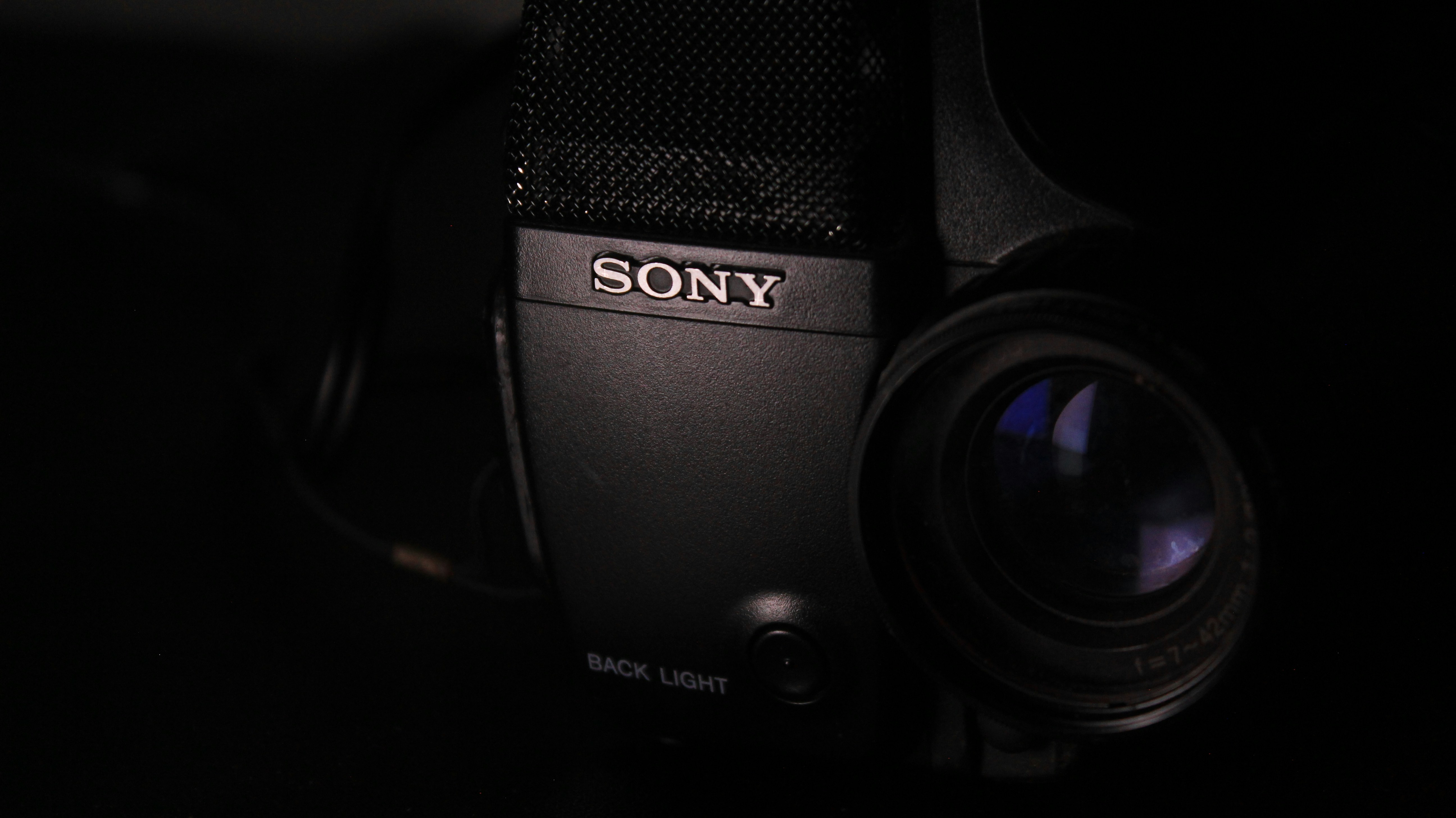
After a deep dive into the Sony A7 III, it’s clear why this camera has become a legend among both beginners and pros alike. It’s not just a camera; it’s a gateway to serious photography that grows with you.
Positives ✅
- Exceptional Autofocus: The Eye AF and wide coverage make capturing sharp images effortless.
- Stunning Image Quality: Full-frame sensor delivers excellent low-light performance and dynamic range.
- Versatile Video Features: 4K video and slow-motion capabilities open creative doors.
- Robust Build & Battery Life: Weather-sealed body and long-lasting battery mean fewer interruptions.
- Huge Lens Ecosystem: From affordable primes to pro-grade glass, options abound.
- Great Value (Especially Used): Professional features at a beginner-friendly price point.
Negatives ❌
- Complex Menu System: Can be intimidating at first, but customization helps.
- Lens Investment Required: Full-frame lenses can be pricey, though third-party options soften the blow.
- Learning Curve: Not a simple point-and-shoot; requires some dedication to master.
Our Confident Recommendation
If you’re a beginner who is serious about photography — whether it’s portraits, landscapes, pet photography, or even video — the Sony A7 III is an excellent investment. It’s a camera that won’t just serve you for a year or two but for many years to come. The initial learning curve is well worth the payoff in image quality, versatility, and growth potential.
Remember the metaphor we teased earlier? The A7 III is like that Porsche with a built-in driving instructor: it helps you avoid crashes while teaching you how to drive like a pro. Start in Auto mode, experiment, and before you know it, you’ll be confidently mastering manual controls and crafting stunning images.
So, is the Sony A7 III good for beginners? Absolutely — if you’re ready to embrace a bit of challenge for a huge leap in quality and capability.
🔗 Recommended Links for Your Photography Journey
Ready to take the plunge? Here are some essential shopping links and resources to get you started:
-
Sony A7 III Camera Body:
- Amazon | Walmart | eBay
- Used: KEH Camera | MPB
-
Sony FE 50mm f/1.8 Lens:
-
Tamron 28-75mm f/2.8 Lens (Third-Party Favorite):
-
Sony NP-FZ100 Batteries:
-
Books to Boost Your Skills:
- Understanding Exposure by Bryan Peterson — Amazon Link
- The Digital Photography Book by Scott Kelby — Amazon Link
- Mastering Sony A7 III by Jason Wisniewski — Amazon Link
❓ FAQ: Your Burning Questions Answered
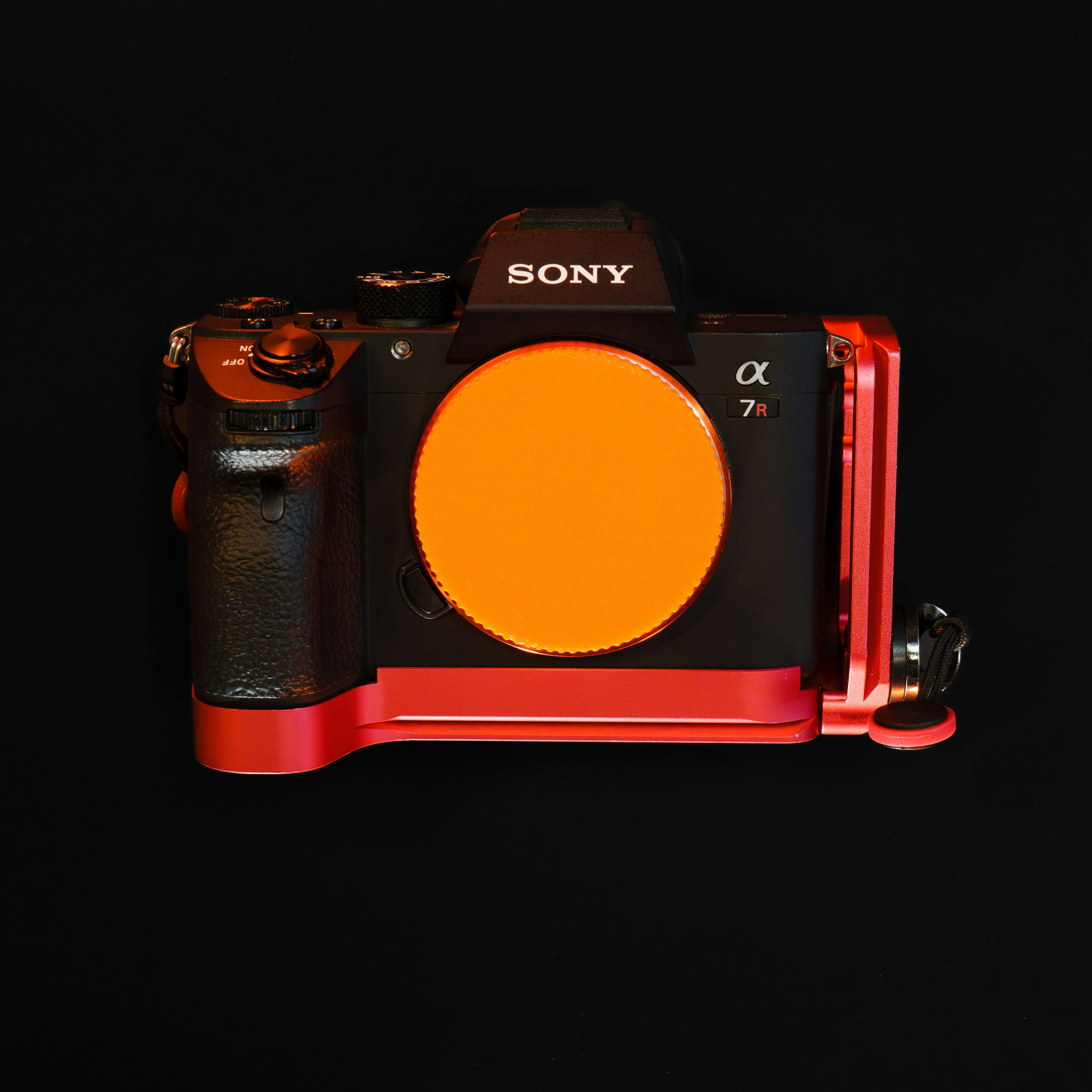
What are the key features of the Sony A7 III that make it suitable for beginner photographers?
The A7 III combines professional-grade autofocus, excellent image quality, and user-friendly automatic modes that allow beginners to capture great photos right away. The Eye AF feature ensures sharp focus on subjects’ eyes, which is a huge help for portraits and pet photography. The camera offers a range of shooting modes from full Auto to Manual, making it a perfect learning platform. Its long battery life and weather-sealed body give beginners confidence to shoot in various conditions.
Read more about “Why Are Leica Cameras So Famous? 7 Secrets Revealed! 📸 (2025)”
Is the Sony A7 III easy to use for those new to mirrorless cameras and full-frame sensors?
While the A7 III is packed with advanced features, it also offers intuitive automatic modes that beginners can rely on while learning. The menu system can be complex, but with some initial setup and customization (like programming custom buttons and the Fn menu), it becomes much more manageable. Starting in Aperture Priority mode lets you control depth of field without worrying about shutter speed or ISO. Plus, the electronic viewfinder (EVF) shows you a real-time preview of your exposure, making it easier to understand how settings affect your image.
How does the Sony A7 III compare to other entry-level full-frame cameras on the market in terms of price and performance?
The Sony A7 III offers exceptional value, especially on the used market, where it can be found at prices competitive with newer but less capable cameras. It outperforms many entry-level full-frame rivals like the Canon EOS RP or Nikon Z5 in autofocus speed, battery life, and video capabilities. Its dynamic range and low-light performance are among the best in its class. While newer models like the Sony A7 IV offer incremental improvements, the A7 III remains a top performer and a smart investment for beginners wanting professional features without the flagship price.
What lenses and accessories are recommended for beginners to get the most out of their Sony A7 III camera?
For beginners, a prime lens like the Sony FE 50mm f/1.8 is a fantastic starting point due to its affordability, sharpness, and low-light capability. A versatile zoom like the Tamron 28-75mm f/2.8 offers flexibility for various shooting scenarios. Accessories such as extra batteries (Sony NP-FZ100), a comfortable camera strap, and fast UHS-II SD cards will enhance your shooting experience. Don’t forget a microfiber cloth and lens cleaning kit for maintenance. As you grow, you can expand your lens collection to include wide-angle, telephoto, or specialty lenses depending on your interests.
📚 Reference Links and Further Reading
- Sony A7 III Official Product Page: Sony Electronics
- Sony E-mount Lens Ecosystem: Sony Lenses
- DPReview Sony A7 III Review & Specs: DPReview
- DxOMark Sensor Score for Sony A7 III: DxOMark
- Sony Firmware Updates: Sony Support
- Inspawration Photography: Which Camera Do I Buy for Pet Photography? — Inspawration
- KEH Camera (Used Gear): KEH Camera
- MPB Used Camera Marketplace: MPB
We hope this guide lights up your path to photographic greatness. Remember, the best camera is the one you love to use — and the Sony A7 III just might be your perfect match. Happy shooting! 📷✨
